Key takeaways:
- Inclusive design principles focus on accessibility for people of all backgrounds and abilities, emphasizing empathy and diverse perspectives in the design process.
- Community housing development fosters social connections, provides access to essential services, and promotes sustainability through shared resources.
- Effective community engagement relies on building genuine relationships, leveraging local influencers, and incorporating creative methods for expression.
- Past projects highlight the importance of involving community members from the beginning, maintaining design flexibility, and ensuring emotional support for inclusivity.
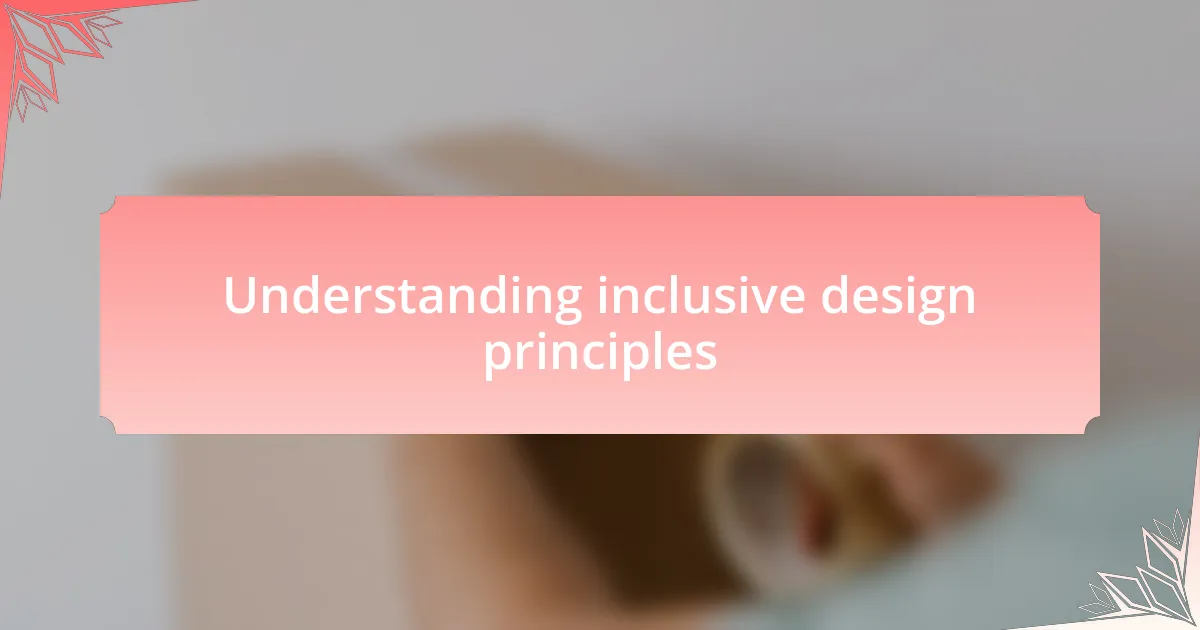
Understanding inclusive design principles
Inclusive design principles are all about ensuring everyone can access and engage with environments and services—regardless of their background or abilities. I remember attending a workshop where we explored how even the smallest design choices can make a significant impact. For instance, consider ramps versus stairs; which one feels more welcoming to someone with mobility challenges?
Understanding these principles means acknowledging that people experience spaces differently. I once had a conversation with a visually impaired friend who shared how critical tactile indicators are in public spaces. This insight opened my eyes to the importance of not just visual design but also auditory and tactile dimensions, making me wonder how often we overlook these essential elements.
In my experience, the heart of inclusive design lies in empathy. When we involve diverse voices in the design process, we gain valuable perspectives that enrich our understanding. Have you ever thought about how a community event can foster a sense of belonging when it’s designed to be accessible to all? It’s those thoughtful and intentional design choices that turn mere spaces into thriving, inclusive environments.
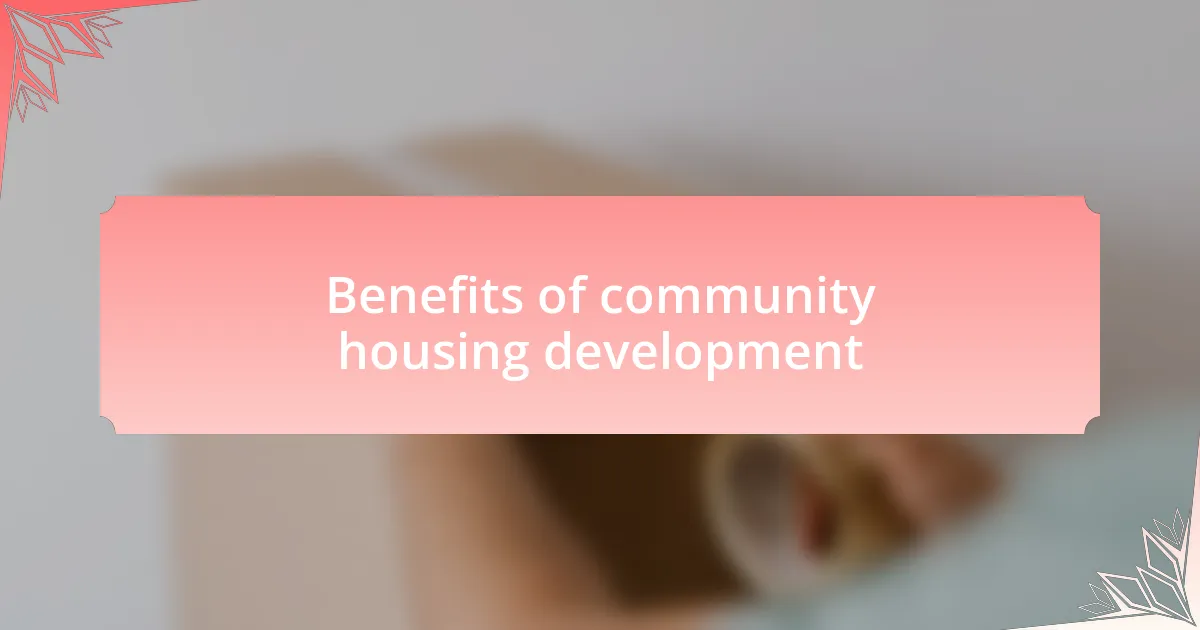
Benefits of community housing development
Community housing development offers a wealth of benefits, fostering connections that enhance overall well-being. I recall visiting a local community housing project where neighbors organized weekly potlucks. It struck me how these gatherings not only nourished the body but also built a sense of belonging. Isn’t it compelling to think that housing can be more than just shelter; it can be a catalyst for vibrant community life?
Moreover, community housing facilitates access to essential services, often in ways that traditional housing fails to do. I once collaborated with a community team that established easy access to healthcare resources within their development. It was inspiring to see families engaging with programs right in their own backyard. Have you ever considered how convenient it is when support systems are integrated into your living environment?
Additionally, the sustainability aspect of community housing cannot be overlooked. During a recent discussion with developers, I learned how shared green spaces not only promote environmental stewardship but also encourage outdoor activities among residents. Isn’t that a wonderful way to blend ecological responsibility with community engagement? These shared resources cultivate healthier lifestyles, proving that community housing can be beneficial both socially and environmentally.
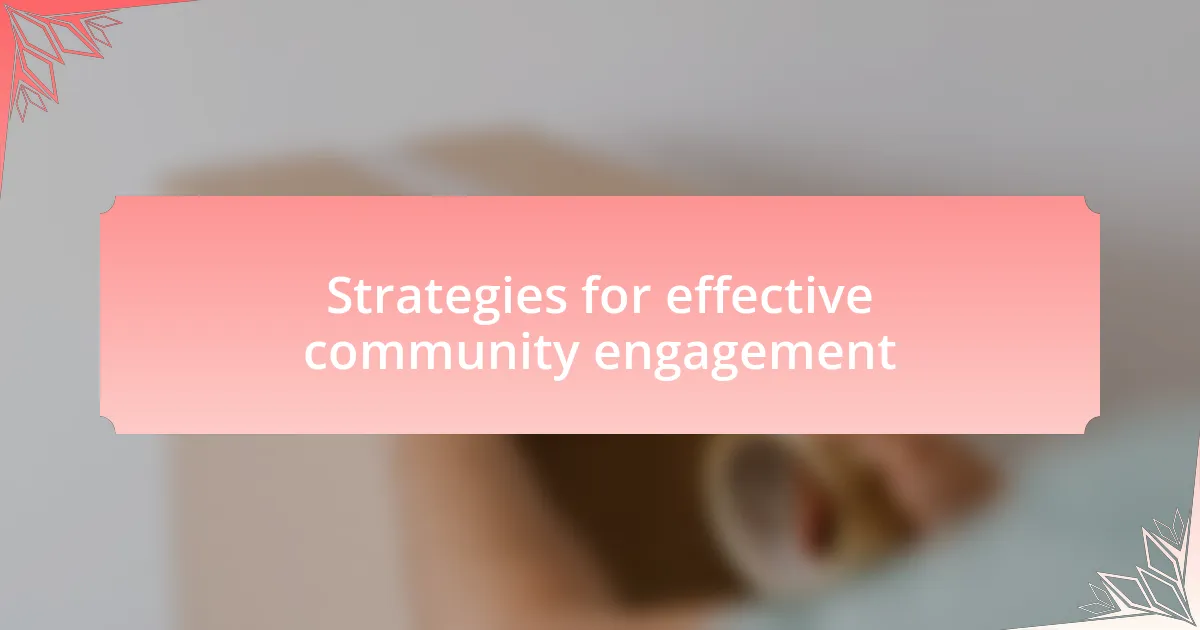
Strategies for effective community engagement
Fostering genuine relationships is key to effective community engagement. I recall a project where I helped organize a series of informal focus groups in a local park. The casual setting made residents feel more at ease, allowing them to express their needs and aspirations freely. Have you ever noticed how conversations flow more naturally outside of a formal setting?
Another effective strategy is leveraging local leaders and influencers to act as bridge-builders within the community. I once worked alongside a well-respected teacher who invited families to discuss housing development plans at her school. It was incredible how her presence alone encouraged parents to share their thoughts and emotions about their living conditions. Isn’t it fascinating how the right person can ignite passion and action within a community?
Lastly, using creative methods such as art installations or storytelling sessions can draw diverse residents into the conversation. During a recent initiative, we incorporated art workshops where community members expressed their visions for housing through murals. Seeing their stories reflected in vibrant color made the project feel deeply personal and engaging. Isn’t art a powerful tool for conveying our collective dreams and aspirations?
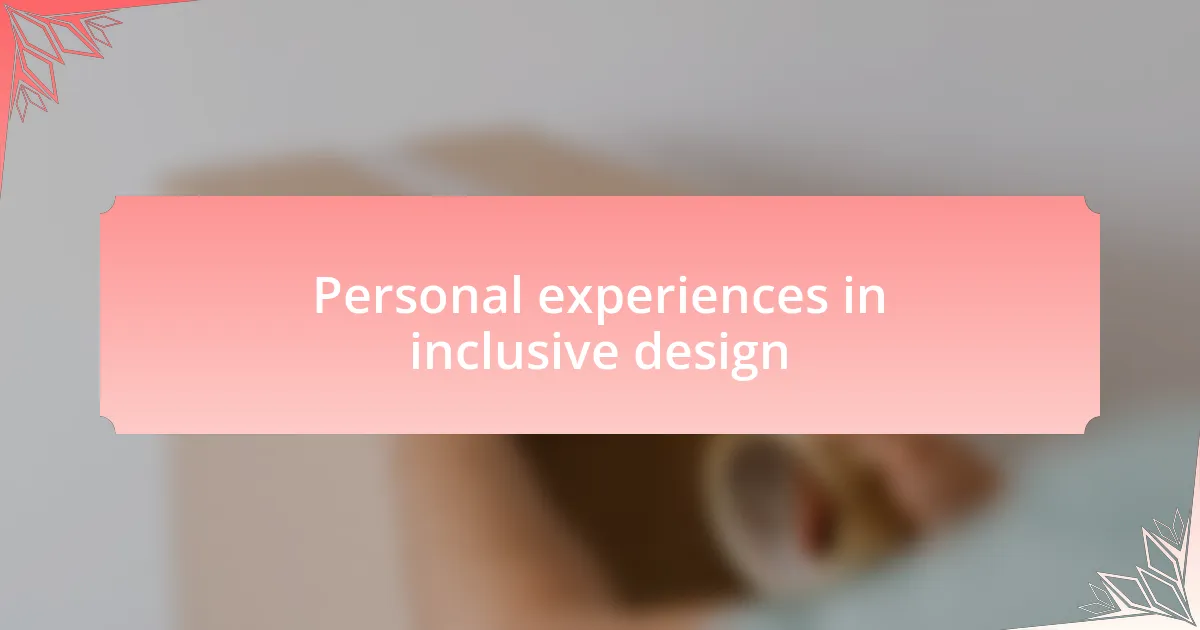
Personal experiences in inclusive design
In my journey through inclusive design, one personal experience stands out vividly. During a community housing project, I was tasked with redesigning a common space to ensure it was welcoming to everyone, including individuals with disabilities. I remember working side-by-side with members of the community, including a woman who used a wheelchair. Watching her interact with the space as we made adjustments brought home the importance of firsthand input. Isn’t it amazing how the voices of those directly affected can shape a space in ways I might have never considered?
Another noteworthy moment occurred while conducting usability testing on a newly developed website for a housing initiative. I invited participants from various backgrounds, including seniors and young families, to explore the site. Their feedback was enlightening; I learned that a simple change in font size made navigation easier for many. It struck me how small adjustments could greatly enhance accessibility, proving that the design process is truly a collaborative effort. Have you ever felt the weight of responsibility that comes with creating designs for others?
In a different project, I facilitated a workshop focusing on how cultural differences influence housing needs. Participants shared their unique stories, revealing how their backgrounds shaped their expectations of community spaces. One man described how he grew up in a tightly-knit neighborhood where everyone knew each other, and he longed to create similar connections in his new development. These stories not only inspired our design choices but also emphasized the deep emotional ties people have with their living environments. Doesn’t it remind you that inclusive design is not just about the physical space, but about fostering a sense of belonging?
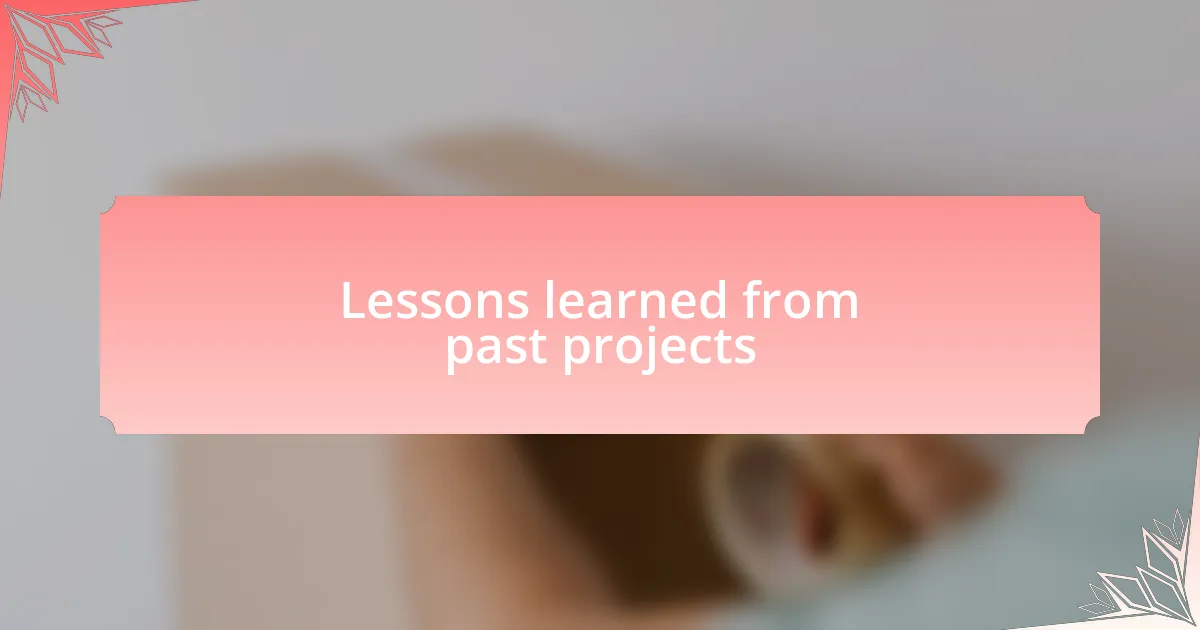
Lessons learned from past projects
Lessons learned from past projects
One critical lesson I’ve absorbed from previous projects is the importance of involving diverse community members from the outset. In one instance, I was part of a team renovating a communal garden. We initially had a vision of what might work, but when we engaged a group of local residents in brainstorming sessions, it became clear that their desires greatly differed from our assumptions. Isn’t it fascinating how a simple conversation can reshape a project?
I also learned that flexibility in design is essential. During a project that featured multi-purpose community rooms, we faced unexpected challenges when feedback highlighted the need for spaces that could easily adapt to various activities. By integrating movable furniture and adjustable layouts, we transformed the rooms into versatile environments. Have you ever realized that the best plans often evolve through iteration and feedback?
Lastly, I discovered the crucial role of emotional support in fostering inclusivity. During a design review, a participant shared their anxiety about feeling left out due to language barriers. This moment reinforced the need for accessible communication strategies throughout our projects. It reminded me that the emotional comfort of individuals can significantly impact their engagement in any design process. How can we ensure that every voice not only feels heard but truly valued in our communities?